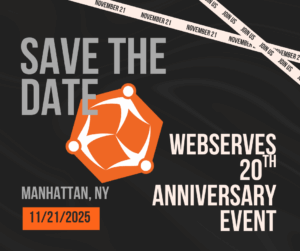Welcome to Part 2 of the series of our AI Awareness Campaign.
As artificial intelligence (AI) becomes more powerful and integrated into our daily lives, a key question arises: who is responsible when AI makes a mistake? Accountability is a significant concern, whether it’s biased decision-making, spreading misinformation, job automation, or even ethical dilemmas in self-driving cars. Who should take the blame when AI fails or causes harm?
The responsibility for AI doesn’t fall on just one group—it’s shared among three key players: developers, companies, and users. Each has a role in shaping AI’s ethical use, but defining clear lines of accountability remains challenging.
1. Developers – The Creators of AI
AI developers and engineers are the brains behind AI systems. They write the algorithms, train models, and determine how AI makes decisions. This means they are critical in ensuring AI is designed with fairness, accuracy, and safety in mind.
Challenges for Developers:
- AI learns from data, which can introduce bias. If the training data is flawed, AI can produce discriminatory or unfair outcomes (e.g., biased hiring tools or unfair credit scoring).
- Developers may not always foresee unintended consequences, such as AI chatbots spreading misinformation or deepfake technology being misused.
- As AI becomes more autonomous, developers may struggle to control how it evolves and adapts in real-world scenarios.
Should developers be legally responsible if AI causes harm? Some argue they should, as they built the system, while others believe responsibility should shift once AI is in the hands of companies or users.
2. Companies & Corporations – The Implementers
Businesses and organizations that deploy AI play a massive role in how it impacts society. They use AI to optimize processes, improve efficiency, and make decisions that affect people’s lives. Companies must ensure AI is used ethically and responsibly, from self-driving cars to AI-powered job recruitment.
Challenges for Companies:
- Profit vs. Ethics: Some companies may prioritize AI-driven efficiency and cost-cutting over fairness and safety.
- Transparency Issues: Many AI models are complex and operate as “black boxes,” meaning even the companies using them might not fully understand how decisions are made.
- Regulatory Compliance: Governments are beginning to introduce AI regulations, and companies must ensure their AI follows ethical guidelines and legal frameworks.
Example: Is the car manufacturer responsible when a self-driving car causes an accident? Should the software developers be blamed? Or does liability fall on the person inside the vehicle? These are ongoing debates in AI ethics and law.
3. Users – The End Consumers
Whether we realize it or not, we interact with AI daily—through search engines, recommendation algorithms, facial recognition, and virtual assistants. But do users have any responsibility for AI’s impact?
Challenges for Users:
- Many people trust AI decisions without questioning them, even when they’re wrong.
- AI is often used in decision-making (e.g., job applications, loan approvals), but do users understand how these systems work?
- Misinformation spreads quickly through AI-driven content (e.g., deepfakes, AI-generated news). Should users be responsible for fact-checking?
Example: If an AI-driven chatbot spreads harmful misinformation, should the responsibility fall on the user who shared it, the company that deployed it, or the developers who built it?
So, Who is Ultimately Responsible?
There’s no simple answer. AI responsibility is a shared burden that requires developers, companies, and users to collaborate. However, as AI evolves, governments and legal systems are stepping in to establish more straightforward rules on AI accountability.
The Future of AI Responsibility:
- Stricter AI regulations may require companies to be more transparent about their AI’s decision-making processes.
- Developers may face greater ethical scrutiny when building AI models.
- Users may need better AI literacy to understand how AI influences their choices.
Previously: - Part 1 – Where AI is Being Used—and Where It Could Go Next




